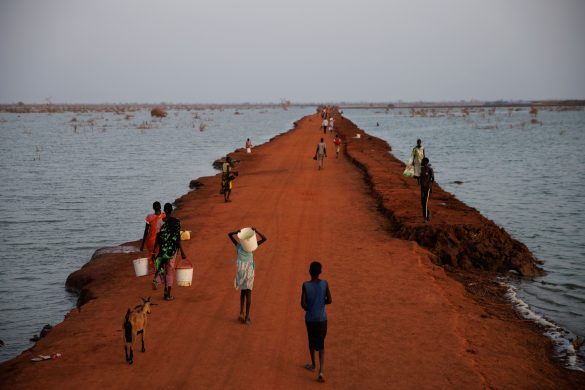Nepals landrug har de senere år slet ikke fået den opmærksomhed og de investeringer fra regeringen, som er nødvendige. Det har medført stigende fattigdom hos de 2/3 af nepaleserne, der henter deres udkomme i jordbruget.
KATHMANDU, 23. januar, 2013 (IRIN): Agriculture in Nepal suffers from years of under-investment, limited research, and scant inputs, technology and services for farmers. Unless things change, Nepal may fall into deeper food insecurity and poverty, say analysts.
“Declining resource allocation to agriculture research and development will have direct implications on attaining the objective of poverty reduction, despite investment made on infrastructure,” noted a December 2012 paper by the US-headquartered International Food Policy Research Institute (IFPRI).
While most development plans give high priority to agriculture – which contributes 35 percent to GDP – government investment in the Ministry of Agricultural Development (MOAD) – has declined from 3,7 percent of all government spending 10 years ago to 2,6 percent this year.
Meanwhile, overall government spending has doubled since 2006.
Budget dropping by 27 per cent
While MOAD saw a slight increase in government and donor funding following the 2008 global and national food crisis, its budget dropped this year by 27 per cent to 105 million US dollar compared to last year due to political squabbling that delayed agreement on an overall government budget.
A partial no-growth budget to continue only ongoing programmes was agreed last November, four months late.
All this has meant a steeper slide into poverty for 66 percent of people nationwide who survive through agriculture.
The average farm size shrunk 36 per cent from 1,1 hectares in 1995 to 0,7 hectares in 2010, often too small to generate income above the poverty line.
“Despite overall reduction in poverty levels in the country, poverty for those self-employed in agriculture increased by 10 percentage points,” reported IFPRI.
“When investment is low, we cannot have new technology and programmes to generate employment and grow effectively,” explained Devendra Gauchan.
He is an agriculture economist and chief of the Socioeconomics and Agri-research Policy Division at the governmental Nepal Agricultural Research Council (NARC).
Extension services
Extension services (landbrugskonsulentydelser) are strained due to lack of staffing and funding. MOAD’s Department of Agriculture has 378 extension offices nationwide.
Every agriculture outreach station serves more than 11.000 farmers; one technician is responsible for an average 1.500 farmers. In developed countries, the average is one per 400.
“We have not been able to provide farmers with the services they need,” said Yagya Raj Joshi, senior agriculture development officer at the Doti District Agriculture Development Office in the country’s Far West Region, known for its rough, mountainous terrain.
He heads a team of 30 staff, responsible for a population of 200.000 – 80 percent of whom are farmers, and 60 percent of whom still depend on increasingly erratic weather for their water.
“Our work is only small-scale,” he told IRIN, that there was no technology to transfer even if there were enough qualified experts to do it.
Most of MOAD’s budget goes on salaries and administrative costs; there is limited money for programming, said Prabhakar Pathak, joint-secretary and spokesperson at MOAD’s Gender Equity and Environment Division.
Compounding (forværrende) farmers’ woes (trængsler), the current extension service model requires they go to district centres and sub-centres for assistance, leaving growers in remote areas most in need of support going without it, says IFPRI, noting:
“On average, rural households require more than two hours to reach their nearest markets or government service centres because of difficult terrain and a lack of transport infrastructure.”
Research
Læs videre på
http://irinnews.org/Report/97321/The-trouble-with-Nepal-s-agriculture














